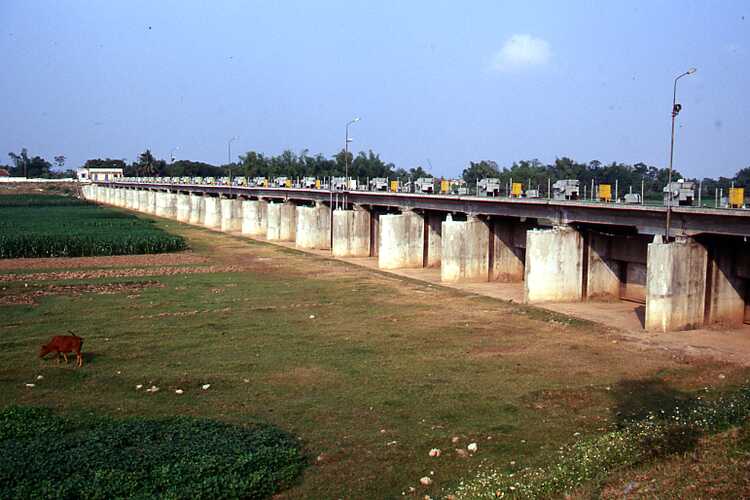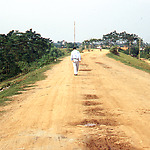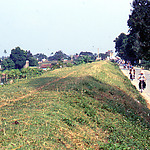The Day River is a green (normally dry) river that branches off from the Red River upstream of Hanoi. The Red River itself flows further past Hanoi. Water can be diverted to the Day River if the water in the Red River near Hanoi exceeds 13.60 m+MSL (Mean Sea Level). This was then a critical water level, which could occur with a frequency of once every 150 years. The river dikes that protect Hanoi are then at risk.
The Day River system was built by the French in 1937. It initially consisted only of the Day Dam - a dam with 26 vertical gates - on the upstream part of the Day River. This allowed approximately 5,000 cubic metres of water per second to be diverted from the Red River. Downstream of Hanoi, that water flows back into the Red River. The Van Coc Dam was placed in front of it in 1975. This is in fact a of 8.6 kilometres lower section of the dike along the Red River, which will naturally be overtopped if the water level rises above 15.00 m+MSL. The water then fills a first retention basin with an area of 100 square kilometres, leading to the first relief of the Red River. If the water then rises higher than the mentioned 13.60 m+MSL at Hanoi, the gates in the Day Dam will be opened. The last time this happened was in 1971. Meanwhile, half a million people lived in the riverbed of the Day River. It was reported that they would be warned 24 hours in advance, so that they could leave in time for a safer place.
The draft feasibility study was presented to us at the Ministry of Agriculture and Rural Development in Hanoi. This ministry is responsible for water management in Vietnam. We got the impression that the place had been carefully examined, but that in fact there was a rusty structure somewhere upstream of Hanoi that had been used once, but had never been maintained. I got the feeling that if this system were to be renovated with the help of Dutch development aid and if it were indeed to be used at some point, questions would arise in our House of Representatives: why Dutch development aid funds had been used with as result that half a million people had been flooded?
Therefore, I strongly insisted that we visited the Day Dam, and on the afternoon before our departure back to the Netherlands in the evening, my boss and I were indeed taken there by the Vietnamese counterparts. This was an extremely useful trip. The Day Dam was excellently maintained, and the system as a whole, including the Van Coc Dam, was well managed. This visit convinced us at once that the Vietnamese in charge would open the Day Dam if the situation of 13.60 m+MSL actually occurred. This is regardless of whether the Netherlands would provide development aid or not. We then advised the Dutch embassy to indeed put this project on the list.
On this basis, an integrated study was carried out. This study made it possible to determine how this system in the broadest sense of the word could best be improved and used in the future.


